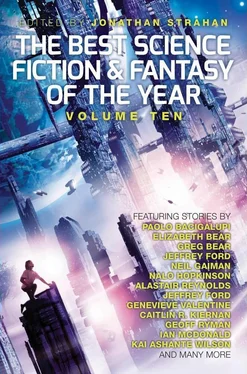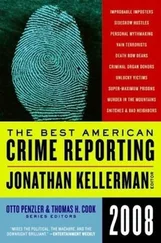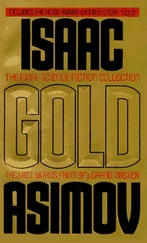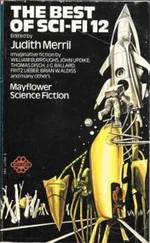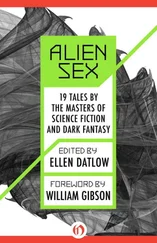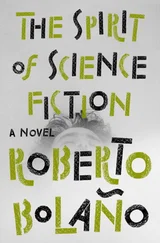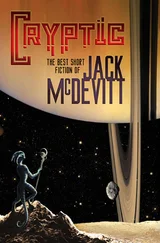ORAL ARGUMENT
Kim Stanley Robinson
KIM STANLEY ROBINSONis the author of nineteen novels and eight collections of short fiction. Winner of the Hugo, Nebula, and World Fantasy Awards, he is best known for the award-winning Mars trilogy – Red Mars, Green Mars , and Blue Mars . Robinson, science fiction’s foremost utopian writer, has published important novels on ecological, cultural and political themes including the Orange Country trilogy, the Science in the Capital trilogy, Antarctica , The Years of Rice and Salt , Galileo’s Dream , 2312 , and Shaman . His most recent books are Green Earth (a revision of Science in the Capital) and Aurora , a major generation starship novel. Robinson lives in Davis, California, with his wife of more than 30 years, environmental chemist Lisa Howland Nowell, and their two sons.
MR. CHIEF JUSTICE, and may it please the court:
Thank you, it’s good to be here. A special hearing convened by you is very special. I’m happy to answer your questions.
Well, yes, the subpoena. But I’m happy too.
No, I did not represent them in those years. And now I’m only serving as their spokesperson while their legal standing is being clarified.
No, I don’t know where they are. But if I did, that would be a matter of attorney-client privilege.
Spokesperson confidentiality, yes. Like protecting my sources. That’s what I meant to say.
I do know what contempt of court means, yes. I brought my toothbrush.
No, I’m happy to answer any questions you have. Really.
Okay, sure. I met them when they were finishing their postdocs at MIT. I should clarify that they had no affiliation with MIT at the time they did the work in question, as MIT has proved.
Their project involved identifying and removing problem parts in the biobricks catalog. After MIT shifted the catalog to the iGEM website –
No, I don’t think repudiated is the right word for that. MIT might have been worried about legal repercussions, but I don’t know. I came in later.
Anyway, after that change of host, the iGEM Registry of Standard Biological Parts grew much larger, and the parties for whom I am speaking found that there were questionable parts in the catalog, for instance a luminous bacteria that emitted lased light which unfortunately burned retinas, or –
Sorry. I’ll try to be brief. While going through the biobricks catalog, my former clients found a seldom-used plasmid backbone called DragonSpineXXL, much longer than typical plasmid backbones. The DragonSpine’s designers apparently had hoped to enable bigger assemblages, but they encountered in vitro problems, including one that they called spina bifida –
It’s a metaphor. I’m not a biochemist, I’m doing the best I can here. But to get to the point at your level of patience and understanding, as you so aptly put it, our bodies obtain their energy when the food we eat gets oxidized, producing ATP inside our mitochondria. ATP is the energy source used by all our cells. In plants, on the other hand, light striking the chloroplasts in leaves powers the production of ATP. Despite the different processes, the ATP is the same – Yes, I too was surprised. But all life forms on Earth share 938 base pairs of DNA, so it makes sense that there are some family resemblances. So, it occurred to my almost clients that –
They consisted of a microbiologist, a systems biologist, a synthetic biologist, and an MD specializing in biochemistry and nutritional disorders –
Yes, no doubt a good joke about the four of them walking into a bar could be concocted. But instead of that they found biobricks in the catalog that could be combined to make a synthetic chloroplast. They felt it would be possible to attach this synthetic chloroplast to a DragonSpine, and still have room to attach another assemblage they concocted, one where fascia cells formed hollow fibroblasts –
Sorry. Fascia are bands of connective tissue. The bands are stretchy, and they’re all over inside us. They kind of hold our bodies together. Like your feet, have you ever had plantar fasciitis? No? You’re lucky. I guess you sit down on the job more than I do. Anyway, fascia consist of wavy bands of collagen blobs called fibroblasts. So, my acquaintances loaded DragonSpines with fibroblasts containing chloroplasts –
Yes, I know it’s confusing. You are not biologists, I know. It’s easy to remember that. What it comes down to is that my sometime clients, using nothing but synthetic parts found in the Registry of Standard Biological Parts, created photosynthesizing human cells.
Wait, excuse me, what you say is not correct. They didn’t want to patent it. They knew that the registry was an open source collection.
I don’t think they suspected that the idea itself would be patentable. The law there is ambiguous, I think that can be said. You might have judged their idea a business method only, you’ve done that before. An idea for a dating service, a new way to teach a class, a new way to replenish your energy – they’re the same, right? They’re ideas, and you can’t patent an idea, as you ruled in Bilski and elsewhere.
Yes, there were some physical parts in this case, but the parts in question were all open source. If you type out your idea on a computer, that doesn’t make it patentable just because a computer was involved, isn’t that how you put it in Bilski ?
Quoting precedent is not usually characterized as sarcasm, Your Honor. The patent law is broadly written, and your decisions concerning it haven’t helped to narrow or clarify it. Some people call that body of precedent kind of ad hoc-ish and confusing, not to say small-minded. Whatever keeps business going best seems to be the main principle, but the situation is tricky. It’s like you’ve been playing Twister and by now you’ve tied yourselves into all kinds of contortions. Cirque du Soleil may come knocking any day now –
Sorry. Anyway the patent situation wasn’t a problem for my erstwhile clients, because they didn’t want a patent. At that point they were focused on the problem so many new biotechnologies encounter, which is how to get the new product safely into human bodies. It couldn’t be ingested or injected into the bloodstream, because it had to end up near the skin to do its work. And it couldn’t trigger the immune system –
Yes, in retrospect the solution looks perfectly obvious, even to you, as you put it so aptly. The people I am speaking for contacted a leading firm in the dermapigmentation industry. Yes, tattooing. That methodology introduces liquids to precisely the layer of dermis best suited for the optimal functioning of the new product. And once introduced, the stuff stays there, as is well known. But my putative clients found that the modern tattoo needle systems adequate to their requirements were all patent protected. So they entered negotiations with the company that owned the patent entitled ‘Tattoo Needle Tip Equipped with Capillary Ink Reservoir, Tattoo Tube Having Handle and Said Tattoo Needle Tip, and Assembly of Said Tattoo Needle Tip and Tattoo Needle.’
This device was modified by the parties involved to inject my future clients’ chloroplast-fibroblasts into human skin, in the manner of an ordinary tattoo. When experiments showed the product worked in vivo, the two groups formed an LLC called SunSkin, and applied for a new patent for the modified needle and ink. This patent was granted.
I don’t know if the patent office consulted the FDA.
No, it’s not right to say the nature of the tattoo ink was obscured in the application. Every biobrick was identified by its label, as the records show.
Yes, most of the tattoos are green. Although chlorophyll is not always green. It can be red, or even black. But usually it’s green, as you have observed.
Читать дальше
